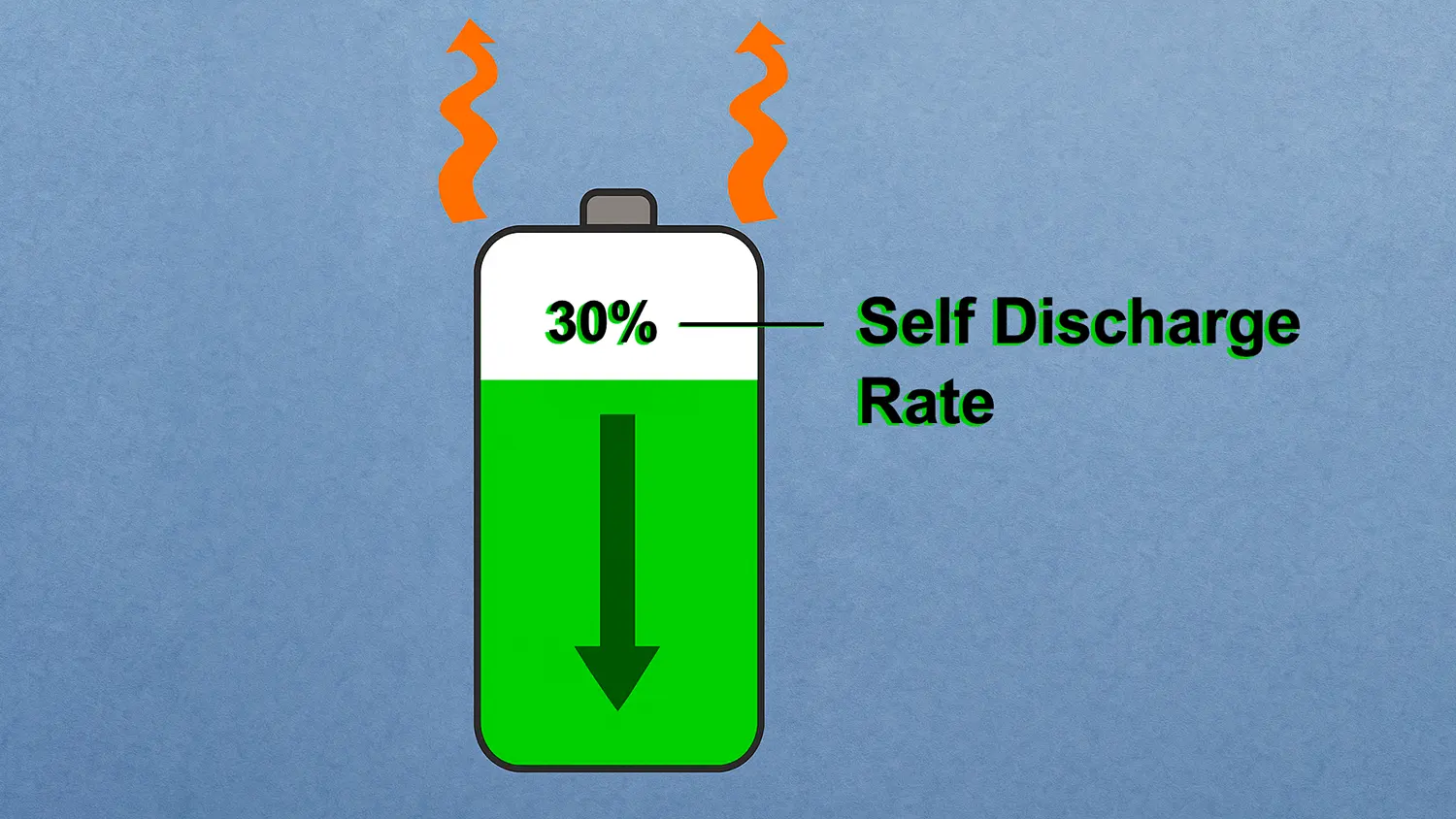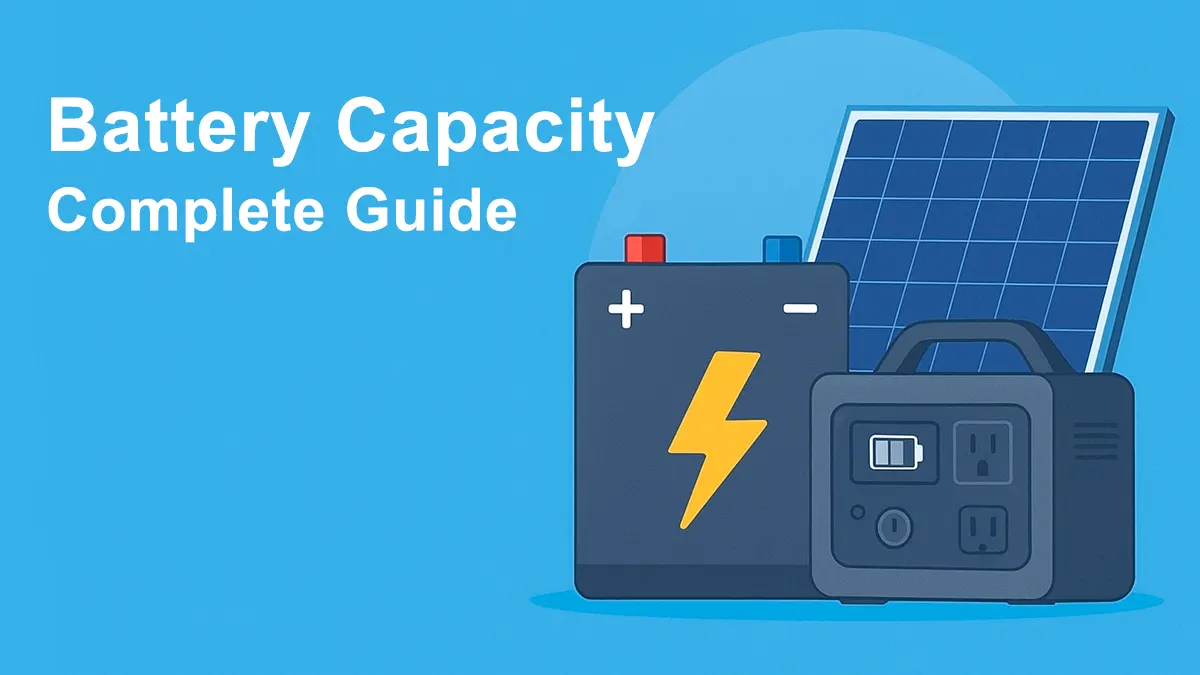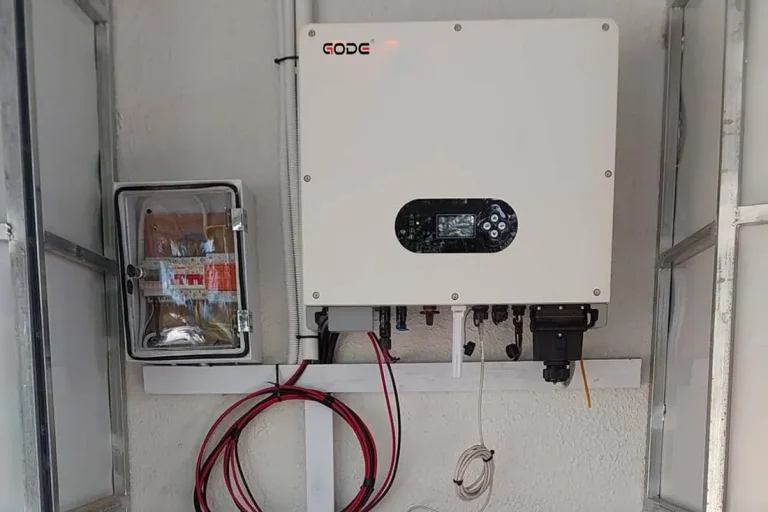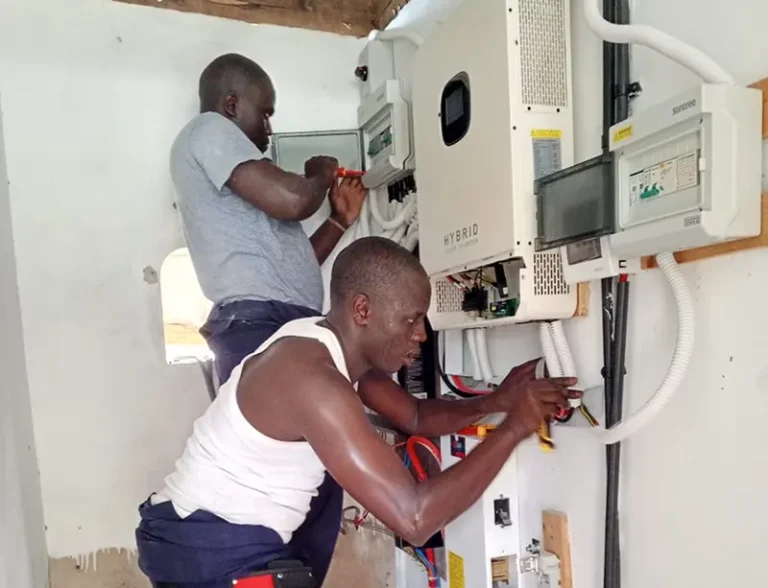15 July, 2025
What Is Depth of Discharge for Batteries? A Complete Guide to Better Battery Health in 2025
In the rapidly evolving landscape of solar energy storage, electric vehicles, and smart microgrids, battery health management has emerged as a core concern for the industry. Among the many factors that influence battery performance and lifespan, Depth of Discharge (DoD) stands out as one of the most critical parameters.
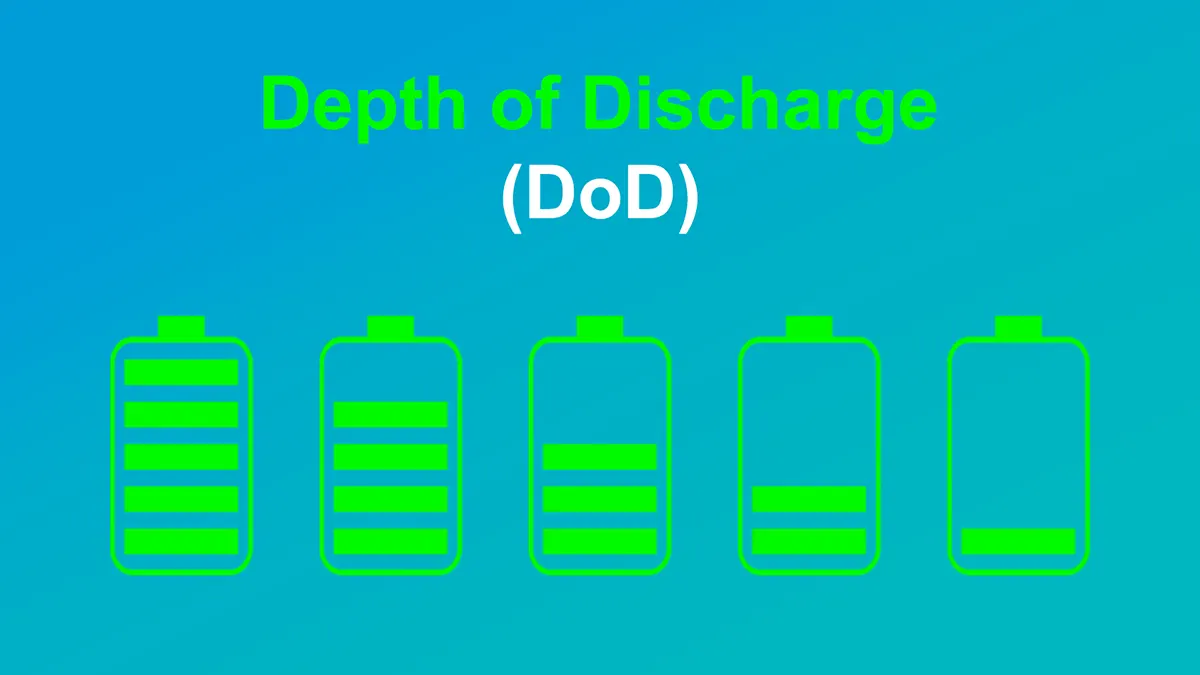
This article will provide an in-depth explanation of what DoD is, how to calculate it, its impact on battery systems, and recommended DoD ranges for various battery types—helping you make smarter decisions when designing or operating energy storage systems.
What Is Depth of Discharge (DoD)?
DoD (Depth of Discharge) refers to the percentage of energy discharged from a battery relative to its total capacity. In simple terms, it indicates how much of the battery’s stored energy has been used.
Example:
If a 10kWh battery discharges 8kWh, the DoD is:
DoD = (8÷10) × 100% = 80%
How to Calculate DoD?
To calculate DoD, it’s essential to first understand State of Charge (SoC)—the complementary metric to DoD—which represents the percentage of remaining battery capacity, or how much usable energy is left.
SoC and DoD are complementary:
DoD = 100% – SoC
SoC = 100% – DoD
Examples:
If SoC = 30%, then DoD = 70%
If SoC = 80%, then DoD = 20%
Why Is DoD Important?
Impact on Battery Lifespan
The lifespan of a battery is typically measured by its cycle life—the number of charge and discharge cycles it can undergo. Generally, shallower discharges help extend the overall lifespan of the battery, while deeper discharges place more stress on the internal structure, accelerating the degradation of active materials and causing the capacity to decline progressively with each cycle.
For example, under an 80% DoD condition, a lithium battery may reach a cycle life of around 3,000 cycles; under a 50% DoD, the same type of battery could exceed 6,000 cycles.
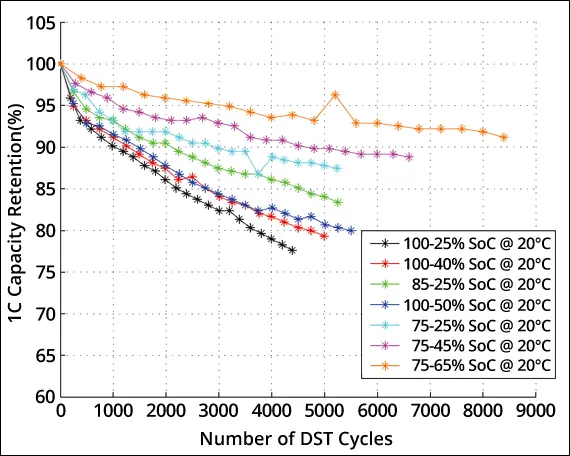
It is important to note that cycle life does not mean the battery stops functioning at that point. Rather, it marks the stage where the capacity begins to decline more rapidly and performance degradation becomes noticeable. Even after surpassing the rated cycle life, the battery may still operate for some time, though its usable capacity will continue to diminish until eventual failure.
Impact on Battery Performance
Depth of Discharge also directly affects the overall performance of a battery.
Under shallow discharge conditions, the electrochemical reactions are milder, allowing the battery to maintain higher charge/discharge efficiency, more stable power output, and lower energy losses.
In contrast, deep discharges trigger more intense chemical reactions, increase internal resistance, and lead to greater energy loss, reduced efficiency, and potentially decreased range and slower charging speeds.
Impact on Battery Safety
Over-discharge is a significant safety concern for batteries.
If the battery voltage drops below a critical threshold, it may result in:
- Electrolyte decomposition
- Abnormal thickening of the SEI (Solid Electrolyte Interface) layer
- Irreversible loss of active materials
These issues not only cause capacity degradation but may also lead to severe safety risks such as thermal runaway, overheating, or even fire.
By properly managing Depth of Discharge—such as setting a minimum State of Charge (SoC) threshold—over-discharge can be effectively prevented, thereby enhancing the operational stability and safety of the battery.
Impact on System Operation
In intelligent energy storage systems, DoD management is one of the core control strategies.
An Energy Management System (EMS) continuously monitors multiple key parameters—such as DoD, SoC, and State of Health (SOH)—to make smart decisions, including:
- Whether to continue discharging
- Which battery modules should be prioritized for charging
- How to dynamically allocate workloads to balance usage and rest across battery packs
By optimizing DoD, the system can operate more efficiently and stably, significantly reduce the rate of battery degradation, extend overall system lifespan, and lower maintenance costs.
GODE’s solar energy storage batteries are built with advanced LiFePO₄ technology, enabling a higher Depth of Discharge without significantly impacting battery life.
Equipped with an intelligent Battery Management System (BMS), the batteries monitor key parameters such as DoD and SoC in real-time to effectively prevent over-discharge, ensuring enhanced safety and energy efficiency.
Whether used in residential solar energy systems or commercial energy management, GODE batteries offer superior energy utilization and lower total cost of ownership—making them an ideal choice for users seeking performance, reliability, and sustainability.
Recommended DoD Ranges for Different Battery Types
In intelligent energy storage systems, DoD management is one of the core control strategies.
An Energy Management System (EMS) continuously monitors multiple key parameters—such as DoD, SoC, and State of Health (SOH)—to make smart decisions, including:
| Battery Type | Recommended DoD Range | Characteristics |
| Lead-Acid (Flooded / AGM) | ≤ 50% | Over-discharge can cause sulfation and shorten cycle life; shallow cycling is recommended. |
| Gel Battery | 50–70% | More resistant to deep discharges than traditional lead-acid, but frequent deep cycling should still be avoided. |
| Lithium Iron Phosphate (LiFePO₄) | 80–90%, up to 95% | Supports deep discharge, offers long cycle life and excellent thermal stability; ideal for solar storage and EVs. |
| Ternary Lithium (NCM / NCA) | Around 80% | High energy density; suitable for portable electronics and EVs, but excessive deep discharging may reduce lifespan. |
| Lithium Polymer (Li-Po) | 70–80% | Lightweight and high energy density; sensitive to overcharge/discharge, commonly used in consumer electronics. |
Depth of Discharge in Key Industry Applications
Depth of Discharge (DoD) is more than just a specification on a battery data sheet—it is a critical factor that determines the stability, cost-efficiency, and safety of an energy system. Below are key real-world applications where DoD plays a central role across various industries.
Solar Energy Storage Systems
In solar-plus-storage setups, especially in residential and commercial solar systems, batteries must store excess solar energy during the day and discharge it at night. Managing DoD ensures that the battery cycles are optimized for longer lifespan while meeting daily energy demands.
Off-Grid and Backup Power Systems
In off-grid scenarios, DoD management is essential. A higher DoD might provide more usable energy per cycle, but at the cost of reduced battery life—especially for lead-acid systems. Smart energy controllers balance DoD to ensure uninterrupted power with optimal battery health.
Electric Vehicles & Consumer Electronics
EV battery management systems (BMS) continuously monitor SoC and DoD to protect battery packs from over-discharge and overheating. Many EVs restrict usable capacity (e.g., only 80% DoD) to preserve long-term health and warranty coverage. In smartphones and laptops, shallow DoD cycles are used to increase lifespan.
Conclusion
Understanding Depth of Discharge and its impact on different battery chemistries can help you optimize your energy storage system design for more efficient and long-lasting performance.
By managing DoD effectively, you can extend battery life, enhance system safety, and reduce operational costs, making it a crucial strategy in the pursuit of sustainable energy utilization.
share



